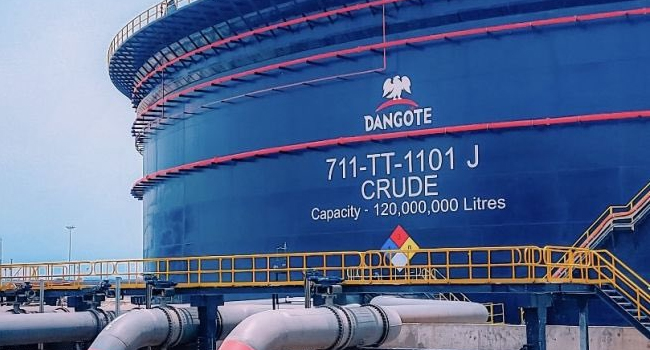
Dangote Refinery retains 13% of Nigeria’s crude exports
The Dangote Petroleum Refinery accounted for 13% of Nigeria’s crude oil exports as domestic supply in 2024. This marks a significant increase from 2% in 2023, while slightly reducing the country’s crude exports to Europe.
Despite being a major net exporter of crude, Nigeria still imported 47,000 barrels per day of US oil in 2024. Experts have described this as unusual for crude oil-exporting nations.
The Dangote refinery, along with other new refineries emerging in the global south, has reportedly altered the global flow of crude amidst sanctions on Russian oil and ongoing conflicts in the Middle East.
The Dangote Petroleum Refinery, with a capacity of 600,000 barrels per day (bpd), played a significant role in the increase in Nigeria’s crude imports from the United States.
In November 2024, the refinery received its first shipment of US West Texas Intermediate (WTI) crude. Multiple shipments from the US further boosted Nigeria’s imports in 2024, as the Nigerian National Petroleum Company (NNPC) was unable to supply crude to the refinery.
According to shipping data quoted by Reuters, global crude oil export volumes in 2024 declined by 2%, marking the first dip since the COVID-19 pandemic. This reduction was attributed to weak demand growth and reshuffled trade routes caused by geopolitical conflicts, sanctions, and the construction of new pipelines and refineries.
The ongoing wars in Ukraine and the Middle East led to significant rerouting of tanker shipments. Sanctions on Russia and Iran forced importers in Europe and South America to seek alternative suppliers.
Following Russia’s invasion of Ukraine, European refiners cut back on imports from Russia and increased their purchases from the U.S. and the Middle East. However, attacks on vessels in the Red Sea due to the Israel-Gaza conflict led to higher shipping costs from the Middle East, prompting refiners to turn to the U.S. and Guyana.
In terms of global oil exports, Iraq’s shipments dropped by 82,000 bpd, and the United Arab Emirates saw a decrease of 35,000 bpd. Meanwhile, Europe increased its imports by 162,000 bpd from Guyana and 60,000 bpd from the U.S.
While Europe and South America reduced their imports of Russian oil, countries like India and China continued to embrace it. Other factors contributing to the reshuffling of oil trade routes include the expansion of Canada’s Trans Mountain pipeline to the west coast, declining oil output in Mexico, and a halt in Libyan oil exports.
The outlook for the global oil market in 2025 remains uncertain. While suppliers are cautious about China’s oil demands in the coming year, some experts predict an increase in demand from India. Additionally, more countries are expected to reduce their oil consumption in favour of gas and renewable energy sources.
It also remains unclear whether President-elect Donald Trump will ease sanctions on Iran and Russia.
“This kind of uncertainty and volatility is the new normal – 2019 was the last ‘normal’ year,” Erik Broekhuizen, marine research and consulting manager at shipbroking firm Poten & Partners said.




